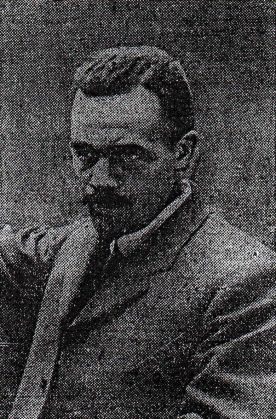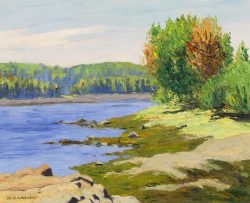William A. Harper, from a photograph published in Chicago News, Feb. 6, 1905.

William A. Harper 1873–1910
William A. Harper moved as a boy from his native Cayuga, in Ontario, Canada, to the Illinois towns of Petersburg and then Jacksonville before arriving in Chicago. As an African American with limited opportunities for employment, he took a job as a janitor at the Art Institute of Chicago while saving money in order to study at its school. Harper enrolled in 1895 and graduated with honors in 1901. Early that year, the Art Students’ League of Chicago annual show at the Art Institute included three landscapes by Harper that were “said to be among the most perfect on exhibition,” according to a Chicago newspaper reviewer.i
Harper went to Houston, Texas, to teach drawing. While there, he was represented in the 1902 annual exhibition of the Chicago Society of Artists with two landscapes, one of which was reproduced in the Chicago art journal Brush and Pencil. The following year, two of his paintings were juried into the Art Institute’s serial Chicago artists’ exhibition, in which Harper would participate annually for the remainder of his short life. During a sojourn in Europe from 1903 to 1905, Harper studied at the Académie Julian in Paris and painted in France and in Cornwall, England. Dubbed the “janitor artist” in the Chicago press, he won a Municipal Art League prize for his group of nine paintings in the Art Institute’s Chicago artists’ exhibition in 1905.ii That year, when Harper exhibited with the Society of Western Artists, he was named one of five “rising young men” on the Chicago art scene in the periodical The World Today.iii By 1907, the Union League Club of Chicago had added three of Harper’s works to its art collection.iv During this period, the artist painted during his leisure daytime hours and supported himself by working as a night-watchman at the Art Institute.
In 1907 Harper returned to Europe, where he worked alongside landscape painters William Wendt and Charles Francis Browne. He studied in Paris under expatriate artist Henry Ossawa Tanner. Harper won the Young Fortnightly Prize in the Art Institute’s Chicago artists’ exhibition in 1908. His health was failing when he traveled later that year to Mexico, where he painted until shortly before his death from tuberculosis at age thirty-six. A memorial exhibition of sixty works at the Art Institute drew wide notice in the Chicago press, where it was observed that at his death Harper “already had marked a vital impress upon the art of his home city.”v
Wendy Greenhouse, PhD
i The Conservator, Feb. 16, 1901, in Art Institute of Chicago Scrapbooks, v. 14, Ryerson and Burnham Libraries, Art Institute of Chicago.
ii “Colored Man Wins Position,” Chicago News, Feb. 6, 1905.
iii James Spencer Dickerson, “The Society of Western Artists,” World Today 10 (1905): 299.
iv L. M. McCauley, Catalogue of Paintings, Etchings, Engravings and Sculpture (Chicago: Union League Club, 1907), 14, 49. These painting were deaccessioned at an unknown date.
v “Among the Artists,” Chicago Record-Herald, Aug. 7, 1910.
